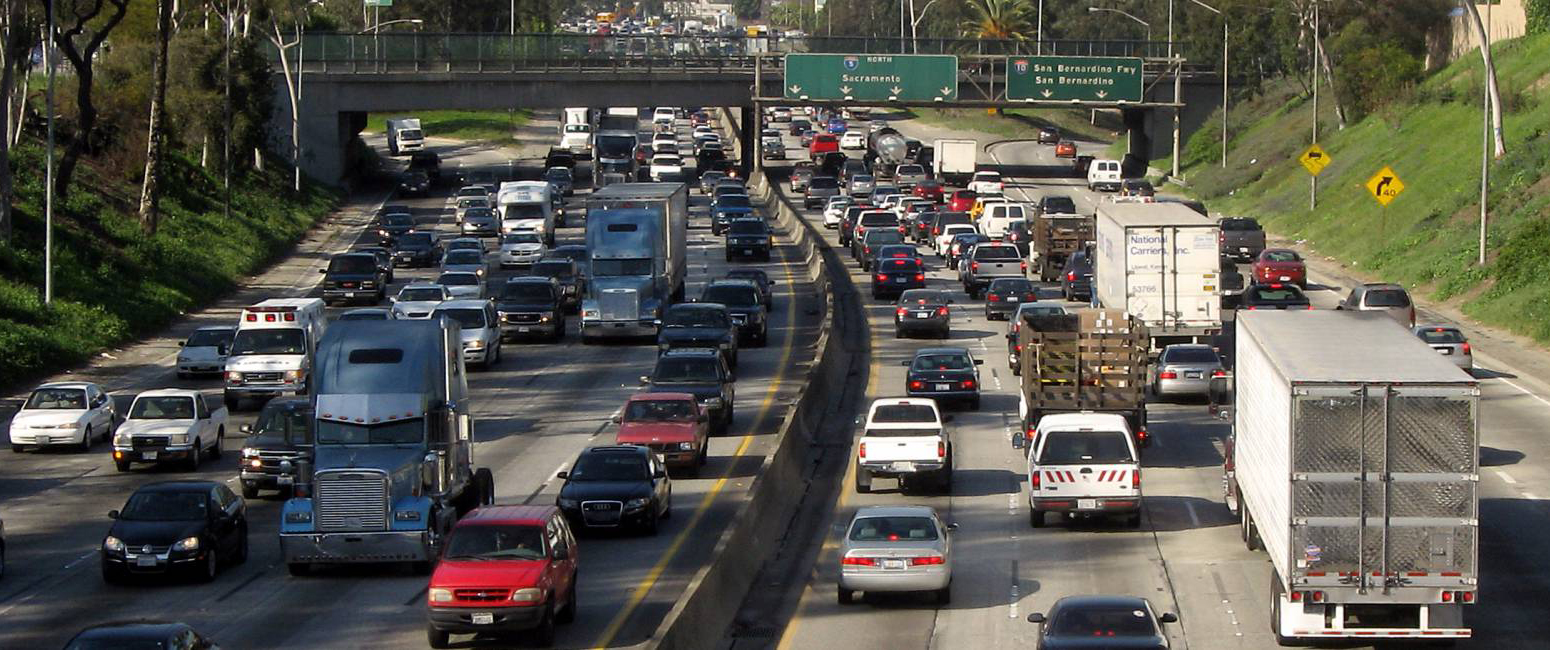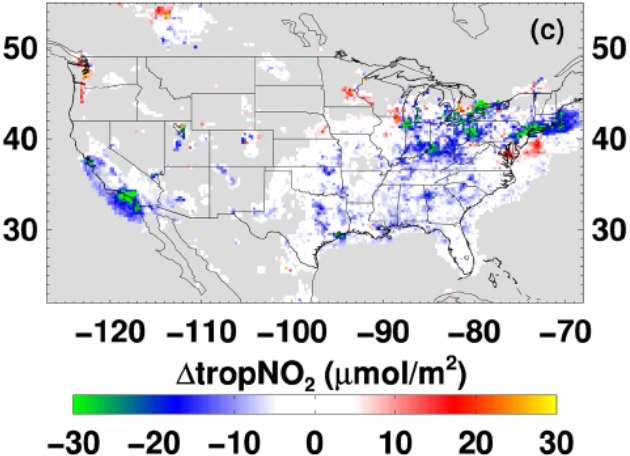A .gov website belongs to an official government organization in the United States.
A lock () or https:// means you've safely connected to the .gov website. Share sensitive information only on official, secure websites.
13 October 2021
adapted from Eos Science News by AGU

Widespread remote work may have kept air pollution lower than pre-COVID lockdown levels even after restrictions were lifted in 2020.
Restrictions on movement due to COVID-19 in the spring of 2020 led to reductions in nitrogen oxides (NOx) emissions from sudden drops in road traffic in U.S. cities nationwide. But even after restrictions were lifted and the flow of traffic resumed, NOx emissions from transportation remained around 20% lower than pre-COVID averages in some cities through the end of the year.
The lingering decline in air pollution could be explained by a rise in remote working, according to a new study published in the Journal of Geophysical Research - Atmospheres.
Using nitrogen dioxide (NO2) data collected by satellites, researchers tracked the fall and rise of traffic-related air pollution in large U.S. cities from February to November 2020: Atlanta, New York City, San Francisco, Los Angeles, and the San Joaquin Valley in California. In the latter four regions, air pollution did not return to pre-lockdown levels even as people resumed normal activities in the summer and remained mobile through fall. Instead, NO2 levels rose to around 80% of what they were in February, then plateaued. Atlanta had a delayed rise in NO2 but returned to pre-lockdown NO2 levels in August 2020.
"Even though lockdowns had been lifted, 25% of the workforce was still working remotely. So if companies continue to offer remote work policies, this could become the new normal [in air quality]," said Shobha Kondragunta, a data scientist at NOAA's Center for Satellite Applications and Research who was lead author on the study.
When they applied their model across major urban areas in the continental U.S., the researchers found decreases in NO2 concentrations in most metro areas from February to November 2020 compared to the same time period in 2019.

The satellites used in the study changed their algorithms in December, so the team could not continue the analysis for December and into 2021. But, Kondragunta said, "even in 2021, we are still below pre-pandemic vehicular miles traveled and related NOx emissions levels nationally." Kondragunta et al. also found a correlation between the national unemployment rate and NO2 pollution in the second fiscal quarter of 2020 (April through June), which they suggest could be attributed to a drop in both passenger and freight traffic. The researchers also considered power plants as a potential source of NO2, but they found negligible contributions except for in New York City.
"Remote work can potentially explain the drops in passenger traffic, but freight traffic is driven more by the economy. The data show a larger drop for passenger traffic than freight—people are still ordering goods if they work at home, right?" said Brian McDonald, an atmospheric scientist at CSL who co-authored the study.
Changes in air pollution from COVID-19 lockdowns varied regionally and are not yet fully understood. The model showed some cities, like Seattle and Chicago, experienced increases in NO2 that exceeded pre-lockdown levels during the study period, along with some rural areas. This could be due to normal background variability in NO2, said McDonald. Understanding regional patterns in air pollution and looking at pollutants other than NO2" is ultimately the goal. We want to know how air quality changed in response to lockdowns, and this study is one piece of that."
Kondragunta, S., Z. Wei, B.C. McDonald, D.L. Goldberg, and D.Q. Tong, COVID-19 induced fingerprints of a new normal urban air quality in the United States, Journal of Geophysical Research, doi:10.1029/2021JD034797, 2021.
Most countries around the world including the United States took actions to control COVID-19 spread that lead to an abrupt shift in human activity. On-road NOx emissions from light and heavy-duty vehicles decreased by 9% to 19% between February and March at the onset of the lockdown period in the middle of March in most of the US; between March and April, the on-road NOx emissions dropped further by 8% to 31% when lockdown measures were the most stringent. These precipitous drops in NOx emissions correlated well (r = 0.75) with tropospheric NO2 column amount observed by the Sentinel 5 Precursor TROPOspheric Monitoring Instrument (S5P TROPOMI). Furthermore, the changes in TROPOMI tropospheric NO2 across the continental U.S. between 2020 and 2019 correlated well with changes in on-road NOx emissions (r = 0.68) but correlated weakly with changes in emissions from the power plants (r = 0.35). At the height of lock-down related unemployment in the second quarter of 2020, the NO2 values decreased at the rate of 0.8 µmoles/m2 per unit percentage increase in the unemployment rate. Despite the lifting of lockdown measures, parts of the US continued to have ~20% below normal on-road NOx emissions. To achieve this new normal urban air quality in the US, continuing remote work policies that do not impede economic growth may become one of the many options.